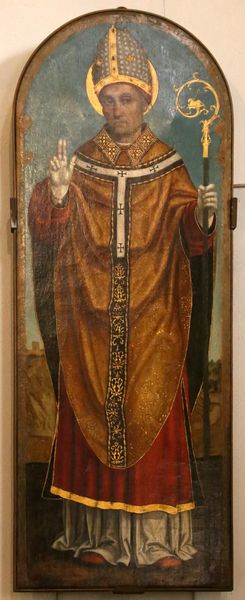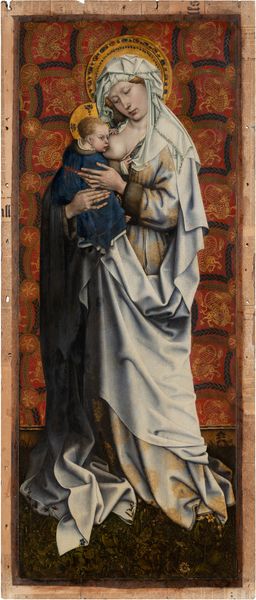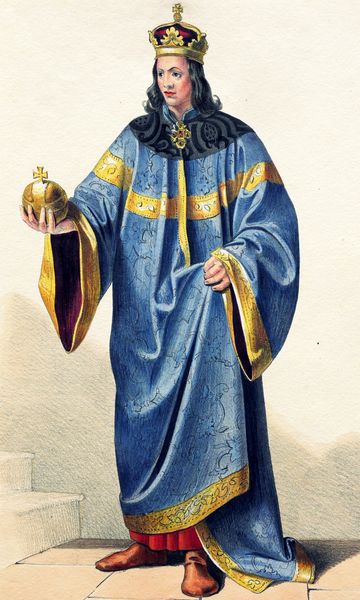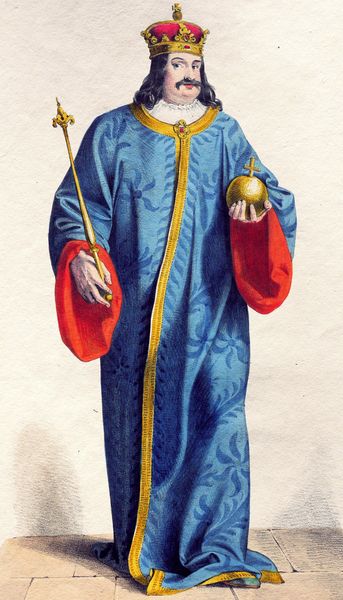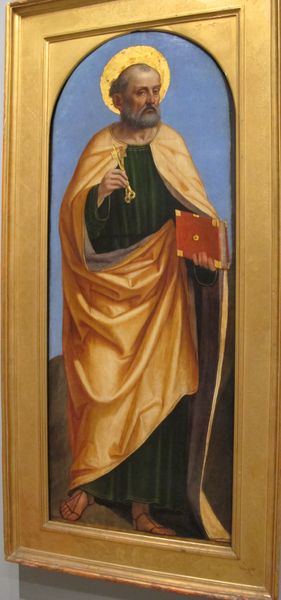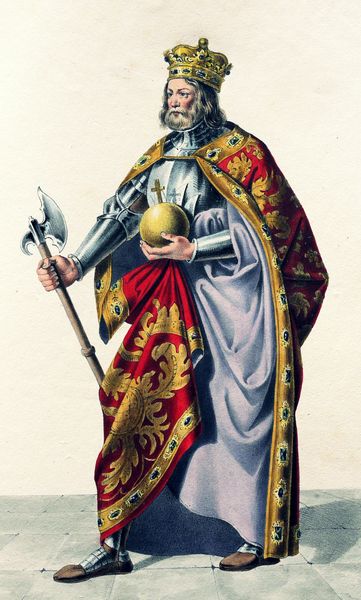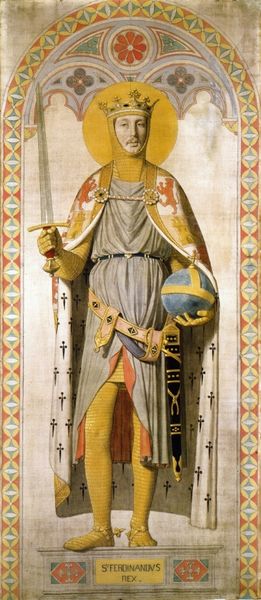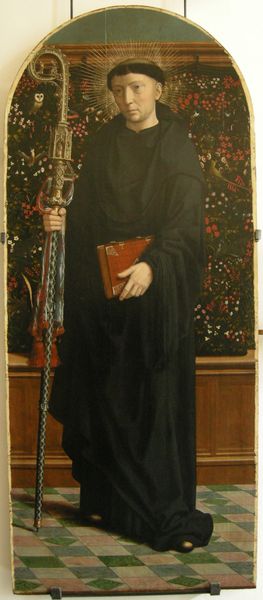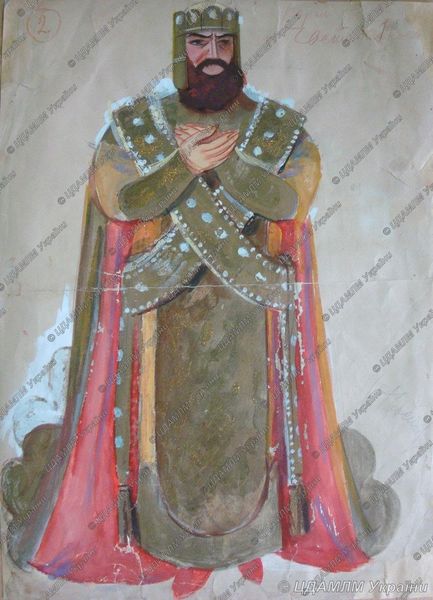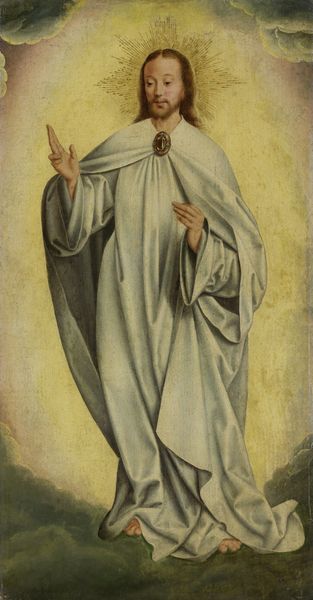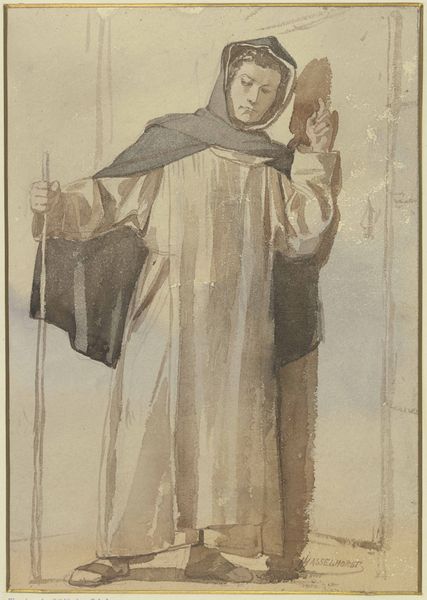
gouache
#
portrait
#
gouache
#
gouache
#
figuration
#
romanticism
#
academic-art
#
watercolor
Copyright: Public domain
Curator: Look at this regal fellow! This is "Vladislav II", a gouache artwork created around 1828 by Josef Kriehuber. The application of color and fine line create such an illusion of texture. Editor: Illusion is right, because initially, one senses immense power but simultaneously feels distanced, even alienated. It seems like we’re observing the embodiment of absolute authority but through a restrictive, possibly romanticized lens. The piece, even through a portrait, screams empire. Curator: Yes, I agree that there is definitely a push and pull between showing reality versus using artistic conventions. Notice the figure’s elaborate garments and how they are structured – the ornate details cascade downwards from his shoulders and torso while his regalia subtly catch the light. Editor: It's also interesting how the color functions beyond decoration. The purples and golds typically are seen to express nobility and spiritual authority while the figure also carries emblems – orb and scepter – representing the extent of his temporal reign, yet the cape is very dark overall. How much of this speaks to performativity? And who is Kriehuber really portraying, if not simply a powerful individual? Curator: I see your point. We cannot simply read them as simple attributes of power. I would consider it in terms of artistic rendering of visual elements creating hierarchical tension on the eye. He is set against a very shallow space pushing the figure towards us. Also the rendering of form: for example, note the intricate gold threading of the embroidered leaf designs—and consider the sharp linearity of the monarch’s face profile as it intersects and punctuates this softness. Editor: Perhaps these features are simply devices for emphasizing not the ruler’s human existence but rather his role— the symbolism he’s draped in rather than the inherent person? Curator: Precisely. Kriehuber masterfully manipulates shape and form to convey power—or at least the impression of power through the conventions of romantic era artistic expression. Editor: It prompts many conversations. Considering that so little is revealed regarding his person, one finds it difficult to read the work outside a theoretical framework. Curator: Indeed, a compelling example of romantic artistic expression in the early nineteenth century. Editor: A telling visual statement of both personal authority and enduring ideology.
Comments
No comments
Be the first to comment and join the conversation on the ultimate creative platform.
